Methods of connecting electrical wires: types of connections + technical nuances
When installing an additional outlet, connecting a new chandelier or eliminating a malfunction in the wiring, you will have to do electrical work. Without practical experience, it is difficult to ensure reliable contact between conductors of different materials, having a different cross section or even a different number of cores.
In our proposed article, all methods of connecting electrical wires that are used in the construction of electrical wiring are described in detail. We examined the technical and technological features of each option. Based on our advice, you can successfully repair or upgrade the power grid.
The content of the article:
Preparing to connect wires
Any electrical work should be carried out competently. It is important to remember that the safety and life of all people and animals living in a house, apartment or cottage depend on the correctness of their conduct. Oversight is unacceptable - in the best case there will be no good contact. And these are inoperative electric points.
In the worst case, someone from family members, friends, or acquaintances who have looked at guests may be shocked by an improperly isolated connection. Or there will be a fire in the wiring, which threatens with a fire.
For high-quality and proper implementation of the electrical wire connections you need:
- knowledge of the main types and principles of connection;
- the availability of special tools for electrical work;
- the presence of all consumables that are useful when performing a particular type of connection;
- preliminary training on individual pieces of wire.
When everything you need is available, you should carefully prepare your future job. To do this, disconnect all the wires with which to deal. This is a very important step that cannot be ignored!
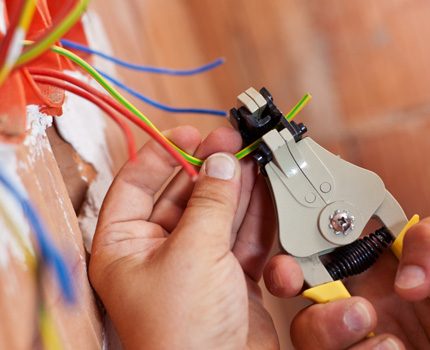
In order not to get a shock, it is better to once again make sure that the apartment or house is really de-energized. In this case, it is convenient to use an indicator screwdriver - this is an inexpensive tool that can be purchased even in the online store.
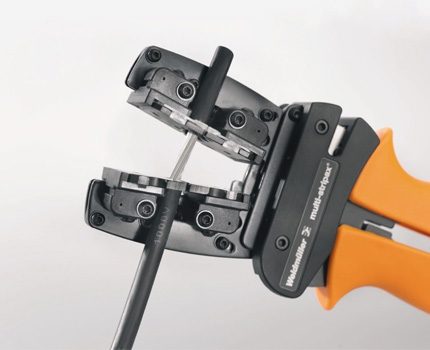
In a situation where there are serious concerns about the feasibility of conducting electrical work with your own hands, it is better to contact an electrician. Moreover, you should invite only an experienced craftsman who has not only experience in carrying out such work, but also a special education.
Electrician services will be especially relevant if replacement wiring throughout the apartment/ house. You can’t save on this - in the end, you can pay a double or triple price, or even pay with your property.
Overview of popular connections
The main types of compounds used in wiring device for domestic needs, there are about 10 options. Among them stand out simple ones that can be accomplished without many years of experience, as well as more complex methods that require not only experience, but also special tools and skills to work with them.
Complex connection options
The connection of two or more wires is performed in order to obtain high-quality contact. It is he who will ensure the operability of all electrical points in a particular house or apartment.
You can establish reliable contact between the conductors on your own or invite a specialist. It all depends on the type of connection chosen, the availability of tools and skills for such work.
Complex types of compounds include:
- soldering;
- welding;
- crimping.
It will be quite difficult for a beginner to cope with these options. The fact is that to solder a node of two or more conductors, a special tool is required, the skills to work with it are one awkward movement and instead of reliable contact you can get the opposite result.
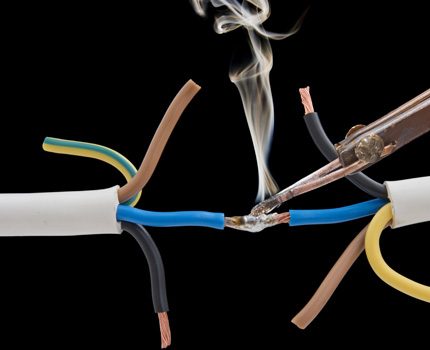
The essence of this method is to remove the insulation from the conductors of the connected conductors and strip them with sandpaper to a shine. Then you need to apply rosin to each vein with a brush and warm it up thoroughly with a soldering iron - the stripped metal should be coated on all sides with an even layer of rosin.
When all the conductors are prepared, it remains to twist them well and heat up the solder with a soldering iron, as well as heat the resulting twist to a boil of rosin. Now you need to apply solder to the heated node of the conductors with a soldering iron and ensure that it flows evenly between the individual veins.
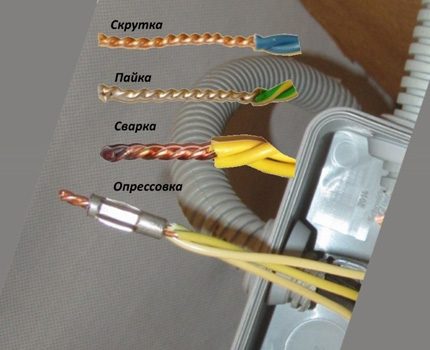
Once it was possible to obtain a full distribution of liquid solder over the entire soldered surface, the soldering can be completed. Now it remains to wait until the resulting node cools naturally.
Welding is an even more complex form of connection. To execute it, you will need:
- welding machine;
- carbon electrode;
- flux, which will protect the melt from oxygen;
- face mask and special heat-resistant gloves on hands.
And the most important thing when working with welding is the ability to use the device. In the hands of an amateur, instead of a reliable contact that can last 30-50 years, a molten conductor and damaged insulation will come out from under the welding machine.
Before welding, make a twist, as before soldering, pre-stripping the ends of the veins to shine. The essence of welding is to obtain a monolithic metal compound.To do this, pour a flux into the recess of the carbon electrode, turn on the welding machine and lower the end of the twist into the same recess.
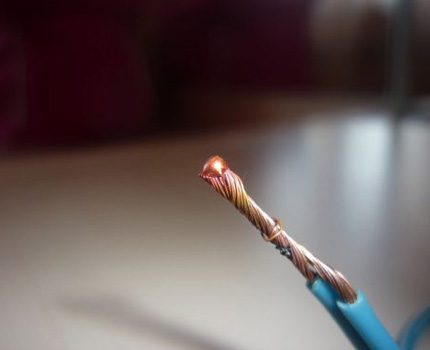
As a result of welding, the ends will melt and a metal ball will form on them. It is necessary to wait for its cooling, clean from flux and varnish.
For crimping, you will also need special equipment - press tongs, also called crimpers, and a metal sleeve made of copper, aluminum, a combination alloy or in insulation.
To get high-quality contact in this way, you need to prepare the conductors conductors as well as before soldering. Stripping is better use stripper, in extreme cases, side cutters. Then take the sleeve and place the prepared cores of one on one side and the second conductor on the second.

Now it is time to squeeze the connection on both sides with press tongs. It is important that the sleeve or other look wire clamp fit the diameter of the cross-section of the connected wires - the wires must freely enter inside.
After compression, the crimper should check the quality of the crimping - you need to pull one and the second wire. If they are tightly clamped and do not fall out of the sleeve, then the contact is successful.
All joints obtained as a result of soldering, welding or crimping are necessarily insulated. For this, an insulating tape or a heat shrink tube is used.
The second option is more convenient and is now used by both professional electricians and home craftsmen. Moreover, when creating a contact using crimping, a heat shrink tube must be worn before inserting the cores into the sleeve.
Easy ways to create contacts
In addition to the time-consuming and complex options for creating contact, requiring skill and the availability of special tools, there are simpler ones that can easily be mastered with your own hands. Such methods are suitable for connecting two or more wires with different cross-sections or with the same. And the material of the cores can be different - copper, aluminum or steel.
The following compounds are related to simple methods most often used in domestic conditions:
- twist;
- bolted;
- screw;
- self-locking.
There are two options for twisting that are done at home. The first - just twist the veins stripped to a shine and wind over an insulating tape or a heat-shrinkable tube. The second option is that a PPE cap is wound on top of the twist.

The first option is a relic of the past. Such compounds are unreliable, they can decay and contact disappears. In the second case, reliability is resisted by the high price for one cap. Buying cheaper products is not worth it - they can not stand the inclusion of a powerful heater in the network or other electrical appliances.
For a bolted connection, it is necessary to prepare a bolt, washers one more than the number of connected conductors, and a nut.When creating a contact, the cores are prepared in the same way as before welding or soldering. One condition - the length of the stripped core should be enough for 3-4 single winding around the bolt.
First, the washer is put on, then the conductor core is wound, then the washer again, the second conductor lives again, the washer again, etc. When the veins of all conductors are wound, the last washer is put on and all this is fixed with a nut. The key is to tighten the connection well to ensure good contact. Be sure to isolate the resulting node.
Another simple and inexpensive way is screw connections. They are carried out using terminal blocks. Moreover, the length of the section to be cleaned from insulation to shine depends on the model of the device and the cross section of the conductor.
The easiest option is self-locking devices or WAGO terminal blocks. They create reliable contact and are easy to use. Another advantage is the possibility of reusable use. Even a person who is very far from electrical installation will be able to remove and reinstall WAGO.
Which option to give preference?
To choose the right execution method conductor connections, you should take into account the features of your situation, evaluate the amount of future work and your skills. If we are talking about replacing a chandelier, then it makes no sense to study the intricacies of welding and buy a welding machine. Here you can spend money on the purchase of original German WAGO terminal blocks.
When there is a full-scale repair of an apartment or house with the replacement of wiring, it is more advisable to use a welding method here. If you do not have the skills to work with this equipment, then you can practice making high-quality crimping and creating all the contacts yourself.
In junction boxes, screw or self-locking terminal blocks. But there is one caveat - they should be tightened periodically. Therefore, you need to arrange the boxes in such a way as to provide easy access to them for the audit.
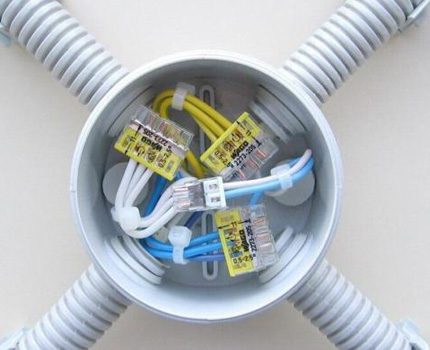
Using ordinary twisting and, as before, wrapping tape on top is extremely dangerous. Moreover, this option is prohibited by electrical rules.
Technical nuances of the main types of connection
Each of the popular types of creating contacts has its own characteristics. So, twisting can only connect single-core conductors of one material.
If you have to create contact with stranded wires, then you need to use special lugs - they compress a bunch of small wires. After installing the ferrule, the conductor can be connected to the terminal clamp without the pressure strip.
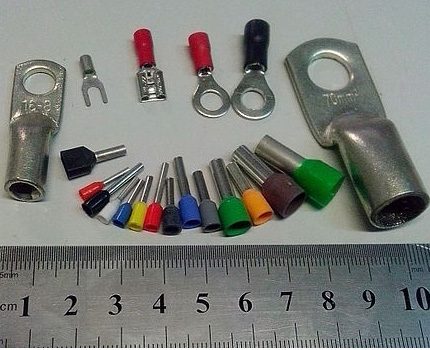
If you have to make up to ten connections, it is advisable to choose the German Vago terminal blocks. They allow you to connect the conductors of conductors of different sections and material. For different materials, it is better to choose Wago with anti-corrosion paste.
But here you should be extremely careful not to buy a Chinese fake.
The main differences between the original WAGO from Chinese:
- the Chinese counterfeit has a contact strip 2 times thinner than the original. It is dangerous to hang more than 5 amperes on the Chinese terminal block;
- the original mechanism does not magnetize, but the Chinese magnet;
- There are no instructions for use on the back of the Chinese fake.
Yes, and the plastic of this self-clamping terminal block is several times better. Therefore, it calmly withstands the load indicated on the reverse side.
You can also use soldering or welding to create a contact for wires with different cross sections. Such a connection will be strong and durable. Of course, if it was performed professionally.
Another important nuance is to always isolate contacts. This is true for simple twisting, for soldering, crimping and welding. And also to create a contact with a bolt.
Bolted connection refers to a cheap, simple to implement and durable option. And conductors of different sections and materials here are able to create reliable contact. True, it takes up a lot of space when compared with a PPE cap or Vago terminal blocks.
Conclusions and useful video on the topic
To qualitatively compress the sleeve when connecting electrical wires, you will need training and a special tool - press pliers. Detailed crimping process in the video:
Even the most expensive terminal block can be a cheap fake. The video demonstrates the main differences between the original Wago:
The video shows a method of bolting a copper and aluminum wire:
The connection of wires by welding can be seen in the video clip:
In choosing a method for connecting electrical wires, one should focus on the appropriateness of its use in a particular situation. If you want to completely replace the wiring in the house / apartment, and there is no personal experience in conducting electrical work, as well as a special tool, the best option is to invite a professional electrician. This decision will allow you not to worry about the safety of your home.
Share your own experiences in making electrical connections. It is possible that your tips will be useful to site visitors. Please write comments, post a photo on the topic, ask questions in the block below for two-way communication.

 Wago terminal blocks: varieties and their characteristics + subtleties of connecting wires with Vago terminal blocks
Wago terminal blocks: varieties and their characteristics + subtleties of connecting wires with Vago terminal blocks 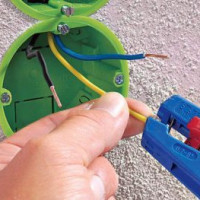 Stripping wires from insulation: methods and specifics of removing insulation from cables and wires
Stripping wires from insulation: methods and specifics of removing insulation from cables and wires 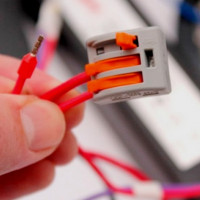 Wire connectors: the best types of connectors + what to look at when choosing a connector
Wire connectors: the best types of connectors + what to look at when choosing a connector 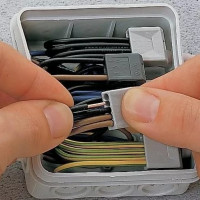 Terminals for connecting wires: which terminal blocks are better and how to work with them
Terminals for connecting wires: which terminal blocks are better and how to work with them 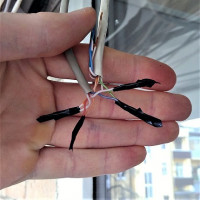 How to connect a twisted pair cable to each other: methods + instructions for building up a twisted wire
How to connect a twisted pair cable to each other: methods + instructions for building up a twisted wire 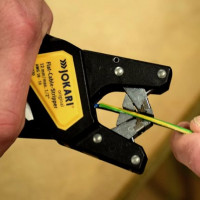 Stripper for stripping wires: rules for selecting a tool for stripping cable and wires
Stripper for stripping wires: rules for selecting a tool for stripping cable and wires  How much does it cost to connect gas to a private house: the price of organizing gas supply
How much does it cost to connect gas to a private house: the price of organizing gas supply  The best washing machines with dryer: model rating and customer tips
The best washing machines with dryer: model rating and customer tips  What is the color temperature of light and the nuances of choosing the temperature of the lamps to suit your needs
What is the color temperature of light and the nuances of choosing the temperature of the lamps to suit your needs  Replacement of a geyser in an apartment: replacement paperwork + basic norms and requirements
Replacement of a geyser in an apartment: replacement paperwork + basic norms and requirements
The article is useful mainly to those who have just started to do electrical, but professionals also have something to learn)
I can’t call myself a pro, but I have been wiring for several years at an amateur level, and often there are various nuances. For myself, I took several new types of wire connections (especially for different wires) and realized what mistakes I made.
If you change the wiring in the house, then do not be too lazy to make a good connection of wires. Any twists have a certain service life, after which problems will begin, because of which again walls will have to be broken. I always do this for myself: I connect the wires to a good twist, then I solder the twist with a powerful soldering iron and fix the connection with a PPE cap. It turns out forever. Yes, and NEVER connect wires from different metals directly. If such a need has arisen - get special terminal blocks for these purposes in the store.
Professionally engaged in electrical installation. I tried different wire connections, but stopped on welding. The main thing is to have a good and fit welder with a current regulator and fixtures. I close the welded conductors with a special insulating cap.